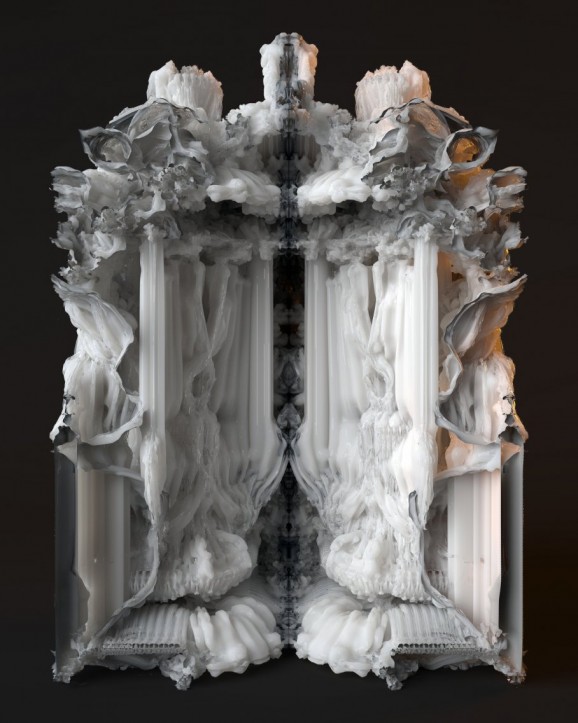3-D Printed Room Turns Architects Green With Envy
This article is more than 2 years old
 By now, everyone knows how awesome 3-D printing is. It can make perfect, tiny replicas of people, food, TARDIS Transformers, and eventually, spacecraft and houses on the moon. As cool as all those things are, none of them make my jaw drop quite like this 3D-printed room called Digital Grotesque.
By now, everyone knows how awesome 3-D printing is. It can make perfect, tiny replicas of people, food, TARDIS Transformers, and eventually, spacecraft and houses on the moon. As cool as all those things are, none of them make my jaw drop quite like this 3D-printed room called Digital Grotesque.
Switzerland-based architects Michael Hansmeyer and Benjamin Dillenburger used computer algorithms to design the 10.5-foot tall, 172-square-foot, 11-ton room, which they believe is the first in the world. While its size alone qualifies it as perhaps the most elaborate 3-D printed project ever, it also contains over 260 million surfaces and is constructed of sand, rather than the usual plastic. The room reminds me a bit of the Sagrada Familia in Barcelona with its combination of art nouveau and gothic elements; it could easily fit somewhere in a Tim Burton movie.

The design of the room was primarily produced by computer algorithms. Once the digital design was complete, they started printing pieces out of sand and a binding agent, and then they assembled it (additional images of the fabrication can be found here). The design took about a year and a month to print, but unbelievably, the assembly of the room only took a day — and that was without the help of robots.

No one will be living in the room — Hansmeyer and Dillenburger intended it to be a “fictive narrative space” that seeks to demonstrate what digital technology can do rather than to function as an actual living space (and anyway, they could decide on the rent). It was their hope to create a digital and grotesque project that “defies classification and reductionism” (check!) and that explores a series of dichotomies, including “synthetic and organic,” “chaos and order,” and “expected and unexpected”. They were also toying with the dichotomies of “control and relinquishment,” which is an interesting spin on the marriage of man and machine.
I love the idea of 3-D printing as a means of artistic expression and exploration. So much of 3-D printing involves the production of functional objects (even if they’re artistically rendered), so it seems high time that the process be used for something artistically grand that exists to stimulate the eyes, mind, and imagination. I think a natural next step after Digital Grotesque would be a 3-D rendering of the Death Star. I’m pretty sure Hansmeyer and Dillenburger are up to it.













